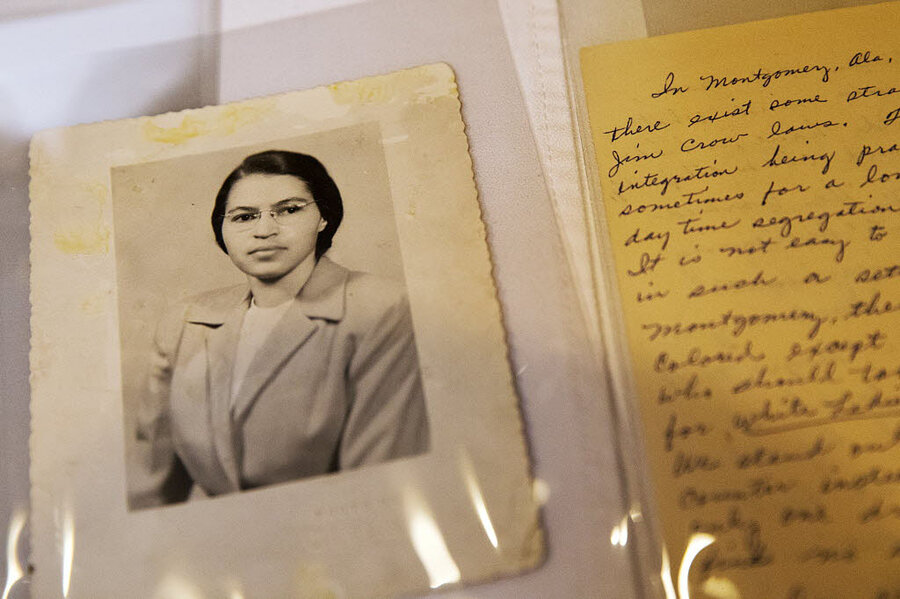Release of Rosa Parks writings reveals surprises about civil rights icon
Loading...
Almost everyone knows the story of Rosa Parks, the civil rights activist who earned her place in history by refusing to give up her seat on a bus to a white passenger in 1955 in Montgomery, Ala. But many do not know that Ms. Parks was a prolific writer who took every occasion to jot down her thoughts and prayers on any scrap of paper she could find – or that for years after her husband’s death, she wore her hair in long braids in his memory.
Now, many of these details about the life of the woman who received a Congressional Gold Medal and the Presidential Medal of Freedom are being unveiled.
On Wednesday, the 102nd anniversary of Parks's birth, the Library of Congress will open a trove of 7,500 manuscripts and 2,500 photos from her personal collection. The collection includes handwritten notes, letters from old classmates, mementoes, and photographs of her husband and her childhood home.
The objects are part of a collection of Parks’s belongings purchased by the Howard G. Buffett Foundation last August and deposited in the library the following month on a 10-year loan, The Washington Post reported, citing the library. They offer a rare glimpse of the life of a woman steeped in the struggle for racial equality since early childhood.
Notes from the collection detail her arrest for refusing to give up her seat and her work with other icons of the civil rights movement, including Dr. Martin Luther King Jr.
"We are really in the thick of it now. Rev. King's home was bombed last night while we were at the First Baptist Church mass meeting. His wife and baby were in the house but not hurt," she wrote to her mother in a letter after the Jan. 30, 1956, attack in Montgomery, the Detroit Free Press reported.
A note written after having dinner with future US Supreme Court Justice Thurgood Marshall and a copy of a letter she sent to Pope John Paul II after meeting him in 1999 are also among her belongings. There is even a postcard that King sent her from Rome.
Some of the collection is from her life before her historic act of resistance. An autobiographical note describes her as a 6-year-old who witnessed her grandfather guarding their home from members of the Ku Klux Klan.
And many of the items detail life under the Jim Crow laws of the times. In a letter, Parks complains about how blacks could work behind luncheonette counters but could not be served at them and how white newspaper readers objected to calling black women "Miss" or "Mrs."
The collection also reveals her support for some of the more radical actions of Malcolm X, the Black Panthers, and the Wilmington Ten, a group of activists convicted in North Carolina of arson and conspiracy, the Associated Press reported.
The objects were in warehouses in New York and Michigan since her death in Detroit in 2005. Some of the objects will be on display in the library’s Thomas Jefferson Building from March 2 to 30.








